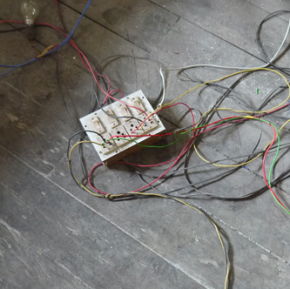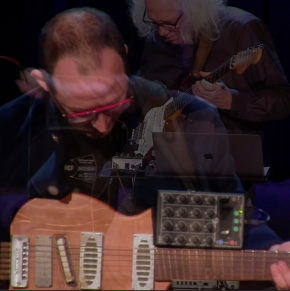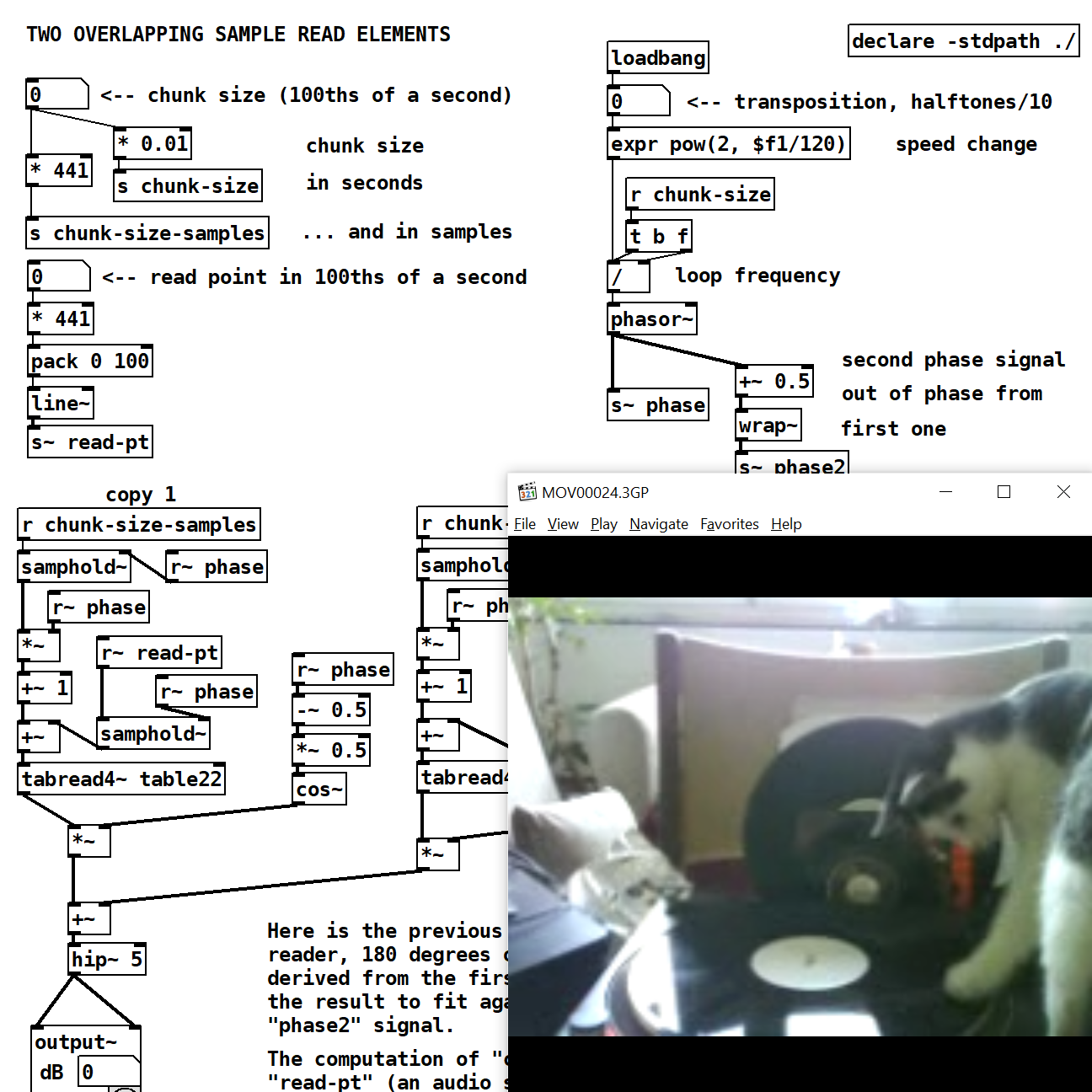2012-12-15
Martin Dornberg, Jens Dreske, Daniel Fetzner, Amjad Khan, Graham Smith, Ephraim Wegner
Freiburg Theater, Mediamarkt, Bangalore
04.00 pm / 08.30 pm, Free Entrance
Performance about the ›missing half second‹ between Shopping Mall, Theater and Insect Lab
After the two Skype performances about the mediality of the VOICE (Voice Via Violin, 2011) and SKIN (PEAU/PLI, 2012) the conclusive project Embedded Phase Delay will focus on the topic of RHYTHM.
»The age of insects with its molecular vibrations, chirring, rustling, buzzing, clicking, scratching and scraping. Birds are vocal, but insects are instrumental; drums and violins. The insect is closer, better able to make audible the truth that all becomings are molecular (cf. Martenot`s waves, electronic music). The molecular has the capacity to make the elementary communicate with the cosmic.«
Story: In the Skype performance Embedded Phase Delay the medial intervention of two musicians and a dancer explore rhythmic resonances between three locations. A tabla player sends sound waves from Bangalore, arriving with a delay of approximately 0.7 sec in Freiburg. There they are manipulated and reflected back to India in discrete sound particles by the electronic musician Ephraim Wegner using granular synthesis algorithms. In parallel, the dancer Graham Smith improvises to the sound mix in a shopping mall. His movements trigger video images that are transferred to Bangalore and projected there. In addition to the missing half-second (see on Theory) in the bodies of the performers the delay of the data transmission is generating a further technical temp perdu in the affect area.
It will be explored, whether in this tissue of cells and activities the oscillating transmission gaps are just lost or if these moments can be filled with interactive experiences and emotions that become visible through organic vibrations and interferences. How is the body awareness, the sense of space and time of both artists and the audience influenced by this kind of connection?
As a working hypothesis the project assumes that communication via digital channels is dismantling the presence in dots and lines, so the subjective experience of time tends to lose its duration. The performance is therefore not designed to function in synchronicity and harmony. It shall unfold itself in the meaning of Bergson as an experience of intrapsychic durée in constant motion.
According to Bergson`s philosophy durée is considered as an “unbounded flux” of time that “gnaws into the future and which swells as it advances.” Duration is not a succession of moments, but it is the combination of time and motion that encompasses all existence. In the ›missing half second‹ the past as well as the upcoming future are present as coexisting spheres (Deleuze).
In the 30-minute performance, the actants try to fill the hyper local space with a intercorporeal resonance as a biomediated body (Clough) by creating an affect zone through their actions. With the surrounding actants in Bangalore and in Freiburg local functional circuits with specific temporal structures are set in motion that affect the action. The physical environment experiences a dematerialization and deterritorialization by this trans-local connection, while the bodies of the improvisers act as kinesthetic amoeba in a placeless field of action.
Both musicians and the dancer are embedded in their own place in their own environmental relationships. The goal-oriented placement of these situational contexts of action is supposed to create a specific mediumship. The medial Interplay shall redefine a virtual place and time as a stream without beginning or end in the sense of Deleuze/Guattari:
»Between things does not designate a localizable relation going form one thing to the other and back again, but a transversal movement that sweeps one and the other away, a stream without beginning or end.« Deleuze/Guattari (1992)
Theory: The ubiquity of the electronic hypersphere is softening the body awareness and the proprioception. Enclosed by the noise of the cloud the post-medial self is loosing contour. Its topologies of time and space get permanently folded into new subdivisions.
According to Helmholtz between stimulation and contraction of a frog muscle lies half a second – between stimulus and response is passing measurable time, which is subjectively not perceived. Helmholtz calls this phenomena of consciousness already half a century before Marcel Proust a temps perdu and remarks: »We do not know immediately, what we do.«
In his article ›The Skin is faster than the Word‹ the Canadian philosopher Brian Massumi is reffering to the phenomenona of the also scientifically relevant missing half-second. For Massumi this temporal intermediate zone is not just empty, but in the opposite overloaded with affects. They do not only act in the present, they are rather localized in time between always-already past and not-yet presence.
»Brain and skin form a resonating vessel. Stimulation turns inward, is folded into the body, except that there is no inside for it to be in, because the body is radically open, absorbing impulses quicker than they can be perceived. (…) The mysterious half-second is missed not because it is empty, but because it is overfull.«
From this perspective the affect in the missing half second is the actual medium of connection. The Cologne-based media scientist Marie-Luise Angerer emphasizes, that perception, feelings and emotions are aimed at elementary physical dimensions, which happen in between the intervals of brain, cells and nerves. Thereby she is referring to the philosopher and mathematician Whitehead, who understands subjectivity in this sense as a zone of lost time and as a kind of In-Betweenness as theorized by the French philosophers Deleuze and Guattari:
»Life is hidden in the interstices of every living cell and in the interstices of the brain.«
Alfred North Whitehead
References:
Abend, Haupts, Müller (Hg.): (2012) Medialität der Nähe. Bielefeld: transcript
Marie Luise Angerer (2012): Die Zeit des Affekts. Vortrag Leipzig *
Patricia T. Clough (2010): The Affective Turn: Political Economy, Biomedia, and Bodies. Zitiert nach Angerer
Deleuze/Guattari (1992): Tausend Plateaus. Berlin: Merve
Deleuze (1988): Die Falte. Frankfurt: Suhrkamp
Henning Schmidgen (2009): Die Helmholtz-Kurven. Berlin: Merve
Brian Massumi (2002): Parables for the Virtual: Movement, Affect, Sensation. Duke University
Brian Massumi (2010): Ontomacht. Die Verbindung audrücken. Berlin: Merve
Alfred North Whitehead (1987): Prozeß und Realität: Entwurf einer Kosmologie. Frankfurt: Suhrkamp
Kerstin Volland (2009): Zeitspieler. Inszenierungen bei Bergson, Deleuze und Lynch. Wiesbaden: Springer




